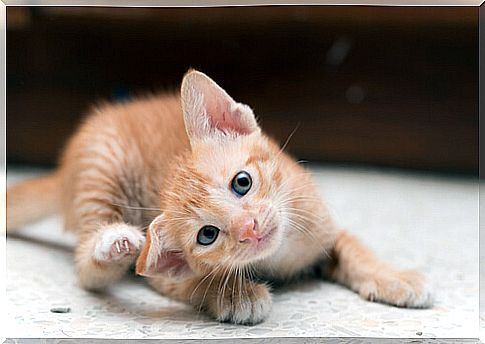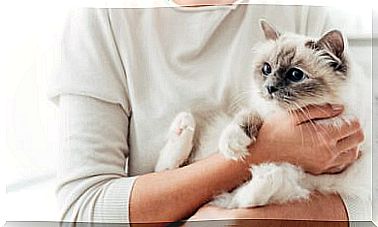Cats Can Get Allergies Too

Allergies are reactions of the immune system to substances that alone do not cause damage to the body. The most common allergies are to pollen, certain foods, dust mites, mold, insect bites … Our friends, cats, can also get allergies: here we show you a few signs to detect them.
Allergies can occur at any age: genetics and the environment play an important role in the development of allergies.
Food allergies in cats
Typically, food allergies are to certain proteins found in meat, fish, or dairy. To detect a food allergy there are tests that we can consult with our veterinarian; There are also elimination diets to detect which food is bad for our cat and remove it from its diet.
The symptoms of food allergies are often associated with skin problems, such as itching and redness, as well as intestinal problems such as vomiting and diarrhea.

Cats can get skin allergies too
Skin disorders in cats can be due to parasites (mites, fleas and ticks), infections, fungi, skin diseases or allergies. Itching is the most common symptom in all of them; the cat can get wounds on the skin when scratching constantly to relieve the itchiness that it causes. Other symptoms are:
- Redness of the skin.
- Dry or flaky skin
- Hairless areas. Hair loss due to excessive licking is very common in skin allergies, caused by the itching suffered by the animal.
- Injury. Wounds and scabs are also common in allergies that affect the skin and hair. Excess scratching can cause skin ulcers; it is common to see it in the facial area and neck.
- Inflamed skin
- Sneezing
- Cough.
- Ocular discharge
- Nasal discharge.
- Skin infections Allergies in cats can be complicated by secondary infections in areas of broken skin.

If we observe one or more of these symptoms, we must consult with the vet, as it could be an allergy, stress or be part of a disease that presents the same symptoms.
The eosinophilic granuloma complex
Eosinophilic granuloma complex is a term that encompasses a group of lesions on the cat’s skin and mouth caused by allergies. Three forms are included in this complex, which are eosinophilic plaques, indolent ulcers, and granuloma:
- The eosinophilic plaques are alopecic areas, bright pink, typically located in the abdomen or thigh and usually very itchy over time, ie, cause very itchy.
- The ulcers are usually not painful and appear on the cat’s lip.
- The granuloma can appear as small swellings on the chin, lower lip and pads of the feline.
How to treat an allergy?
The best way to treat an allergy in cats is by removing the allergen from the environment, which is what causes the allergy. But many times it is not possible to eliminate its presence completely and some cats can suffer respiratory problems. In these cases the vet can prescribe some medication to alleviate the symptoms.
Good hygiene guidelines for our feline’s belongings, such as beds and toys, as well as a good diet, are the best ways to prevent allergy signs.
Feline asthma
Feline asthma encompasses diseases that affect the lower respiratory tract, from the bronchioles to the lungs. It consists of an inflammatory process that obstructs the respiratory tract and hinders the passage of air, and is also caused by environmental factors such as pollution, tobacco smoke, mold, dust mites, aerosols …
Siamese cats are one of the most affected breeds. Plus, it turns out that these cats can get allergies too.









